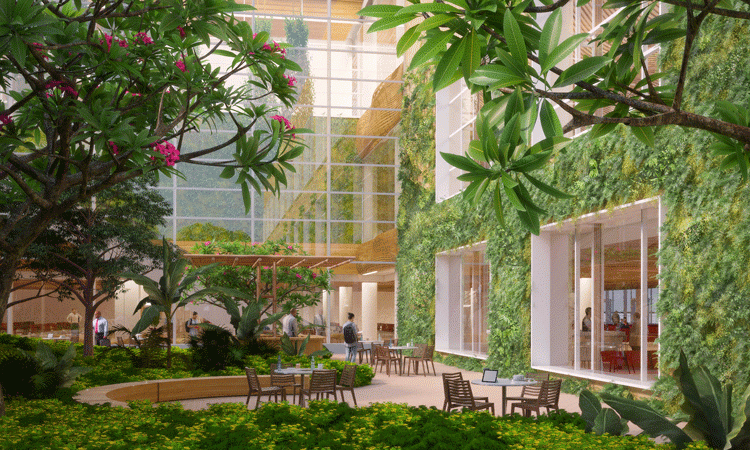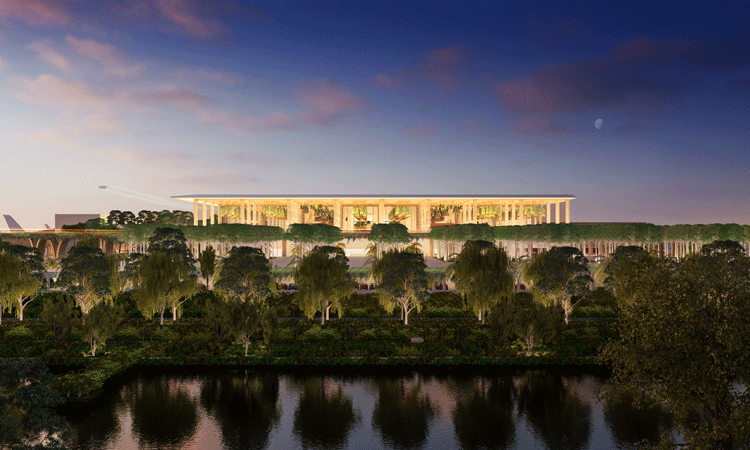Exploring Bengaluru’s sustainable garden terminal
Published on by Trudi Schifter, CEO and Founder AquaSPE in Case Studies
Bengaluru International Airport is a pioneer among airports in Asia with regard to sustainability. Hari Marar, MD and CEO of Bangalore International Airport Limited, tells us about the various environmentally-friendly initiatives that have been implemented.

Not only is the Kempegowda International Airport Bengaluru (KIAB) one of the fastest growing airports in the world with an annual footfall of over 33 million passengers, it has built a solid reputation for sustainability initiatives. At Bangalore International Airport Limited (BIAL) we strive to not only transform the airport into a model airport but establish innovative methods for ecological sustainability.
To cater to the stupendous growth in passenger volumes projected over the next few years, Bangalore International Airport (BLR) – as KIAB is popularly known – is investing approximately US$2.5 billion into infrastructure expansions that include constructing Terminal 2, a new runway and associated projects, with a firm focus on sustainability in design, construction and operation.
The Terminal 2 expansion has all the credentials to be among the best in the world. It is built on four guiding principles: Technology leadership, being a terminal within a garden, environmental and ecological stewardship, and a celebration of Karnataka’s rich heritage and culture.
Constructing an airport terminal in a garden
The ‘Terminal in a Garden’ – designed to revive Bengaluru’s green identity – has been meticulously planned to create state-of-the-art infrastructure with a low carbon footprint. From construction to operational efficiency, every aspect of T2 is focused around green principles.
T2 is designed to provide an innovative airport experience, including calming gardens at areas of high stress, exciting gardens along the journey and restful gardens at waiting areas. With lush greenery, both within and outside, T2 will be a visual delight. The concept aims to give passengers a natural feel of a garden as they pass through every terminal touchpoint. The outdoor garden will enhance the aesthetics, while offering the feel of a natural forest that includes water bodies and natural topography. The gardens will feature distinctive plants, including native specimens of trees, flowering trees and shrubs. The installation of portals, water bodies, rocks, digital technology, lighting and signature plants at strategic locations will further enhance the overall experience.
There will be minimum reliance on artificial illumination, treated water used for the landscape indoor gardens, and a leveraged temperate climate to reduce dependence on mechanical conditioning. Special attention will be placed on the use of construction material to minimise environmental impact and maximise sustainability. Policies are in place to recycle all waste material from the production process and ensure more energy-efficient processes are followed. Products will be chosen from certified sustainable sources with recognised accreditation while ozone-depleting substances and components requiring high-energy input will be prohibited.
To further demonstrate its commitment to establish innovative methods for sustainable growth, BIAL has already implemented various landmark initiatives with a major focus on energy saving, water conservation, waste management and pollution control measures with an aim to take sustainability to new heights.

Water management at Bengaluru
Our airport is located in an area where the water table, over the years, has depleted substantially. With over approximately 100,000 passengers arriving and departing each day, the airport requires millions of litres of water. To ensure that the water supply remains uninterrupted, BIAL has put in place measures that has not only made BLR Airport water neutral but improved the region’s water table.
Rainwater harvesting
The rainwater discharge from the airport buildings is stored in large underground tanks with a 1.7 million-litre capacity, treated and reused. Excess water from the tanks is then allowed to flow into stormwater drains and recharge the aquifer as well as flow into adjacent lakes. Going forward, all stormwater and water discharge, including grey and black water, will be treated onsite. The revival of lakes in the airport’s vicinity is a huge benefit for the local communities who depend on these water bodies for agriculture.
The ongoing development of rainwater harvesting ponds – nearly 70 acres within the BLR Airport campus – will create large water bodies that will support BIAL’s sustainability initiatives through harvesting over 750 million litres of rainwater per annum. This will translate to 1.6 million litres of usable water every day through the year.
We have engaged the prestigious Indian Institute of Science (IISc) to study the current scenario and suggest sustainable methods for restoration of water bodies. To further improve water resources, BIAL is in the process of revamping the existing lakes and developing new sources.
Groundwater recharge pits
With 315 recharge pits located in the stormwater drains, BIAL has adopted the development of unlined drains on the campus to increase recharge. A large volume of rainwater is used to recharge the aquifer. The well-designed stormwater drain flows into the adjacent lake. Approximately 500 million litres of rainwater has been used to recharge the ground and lake, thus increasing the water table in the local area.
Rehabilitation of old wells
Six abandoned wells have been rehabilitated, cleaned and repaired. Due to the recharge system that is newly in place, the wells now hold substantial amounts of water, even during the summer months.
Media
Taxonomy
- Airport Construction
- Infrastructure
- Airports